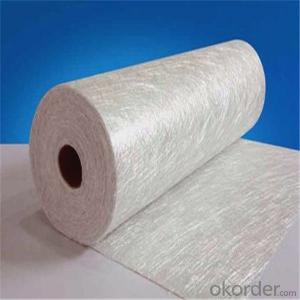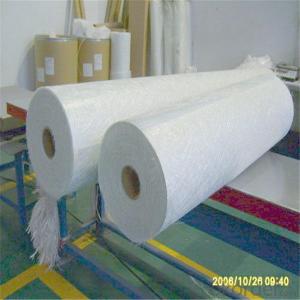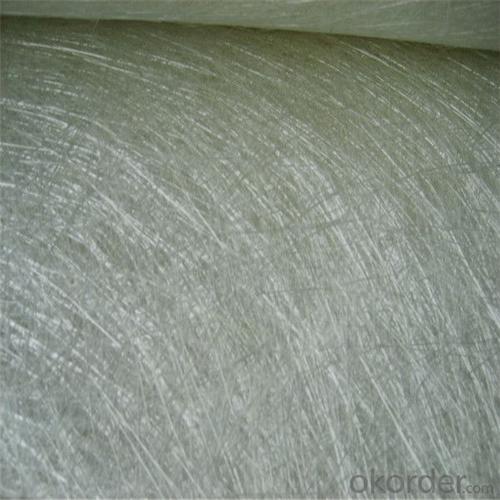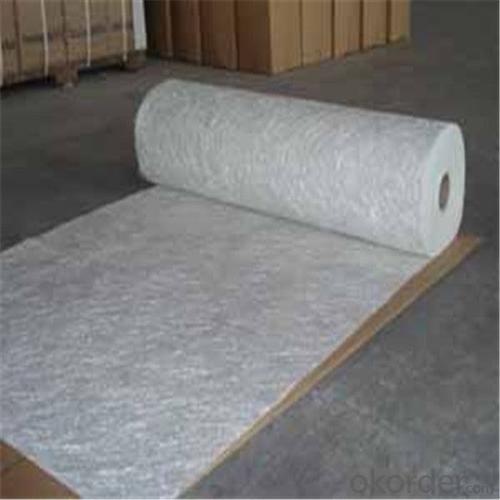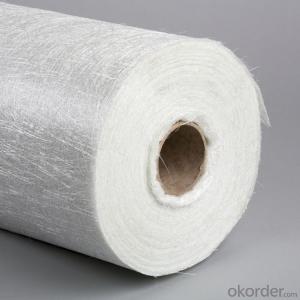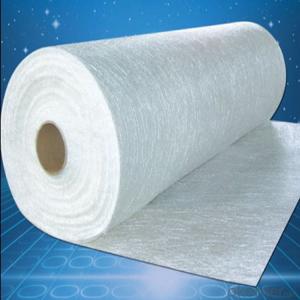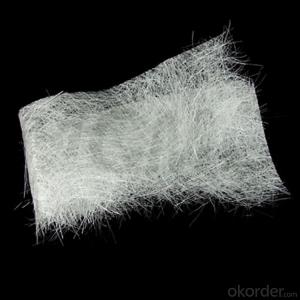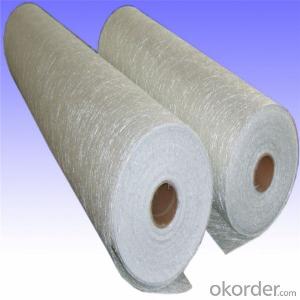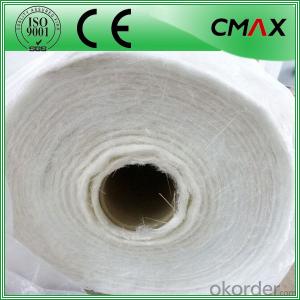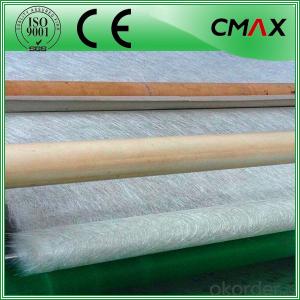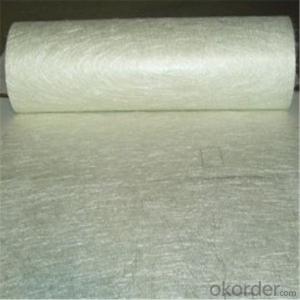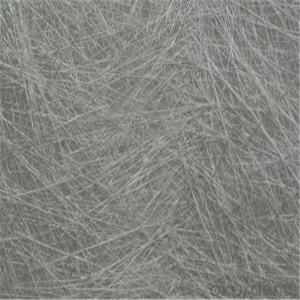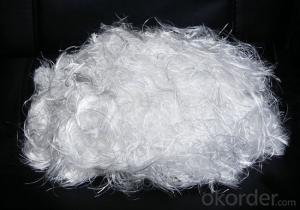Chopped Strand Fiberglass for Sale - Chopped Stand Mat for Fiberglass Boat Parts
- Loading Port:
- Tianjin
- Payment Terms:
- TT OR LC
- Min Order Qty:
- 100 m.t.
- Supply Capability:
- 20000 m.t./month
OKorder Service Pledge
Quality Product, Order Online Tracking, Timely Delivery
OKorder Financial Service
Credit Rating, Credit Services, Credit Purchasing
You Might Also Like
Quick Details
| Technique: | Chopped Strand Fiberglass Mat (CSM) | Dimensions: | 450gsm | Mat Type: | Continuous Filament Mat |
| Fiberglass Type: | E-Glass | Softness: | softness | Place of Origin: | Jiangxi, China (Mainland) |
| Brand Name: | cnbm | Model Number: | 450gsm | color: | white |
| fiberglass type: | E glass | product: | e-glass powder chopped stand mats | binder: | powder or emulsion |
| width: | 1040 or 1270mm, as your requirement | weight: | 30 or 45kg/roll | paper tube diameter: | 90mm |
| outer diameter of roll: | 256mm | packing: | plastic film+carton box + pallet |
Packaging & Delivery
| Packaging Details: | plastic film+carton box + pallet |
| Delivery Detail: | 15-20days |
Specifications
1.e-glass powder chopped stand mats
2.binder:power or emulsion
3.width:1040mm or 1270mm
4.weight:450gsm
Picture
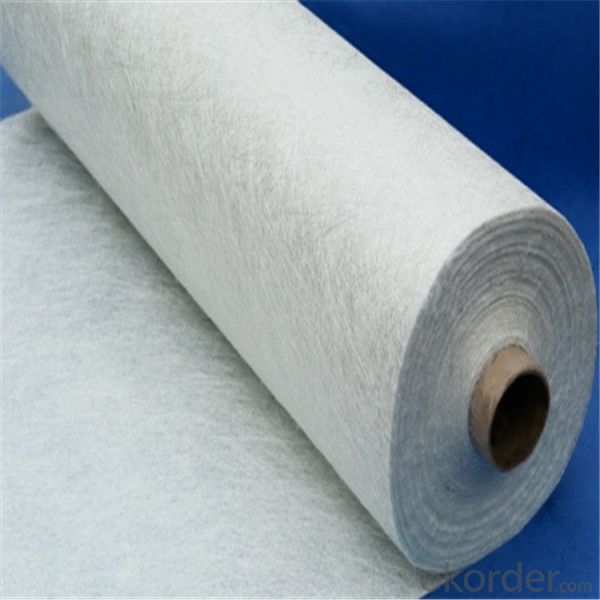
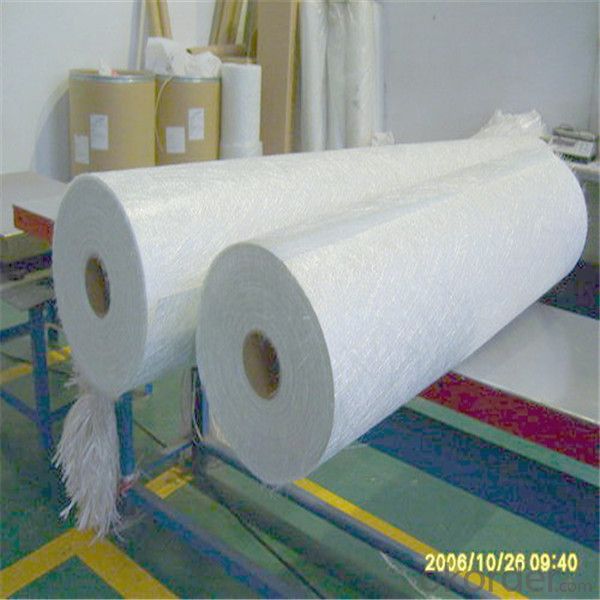
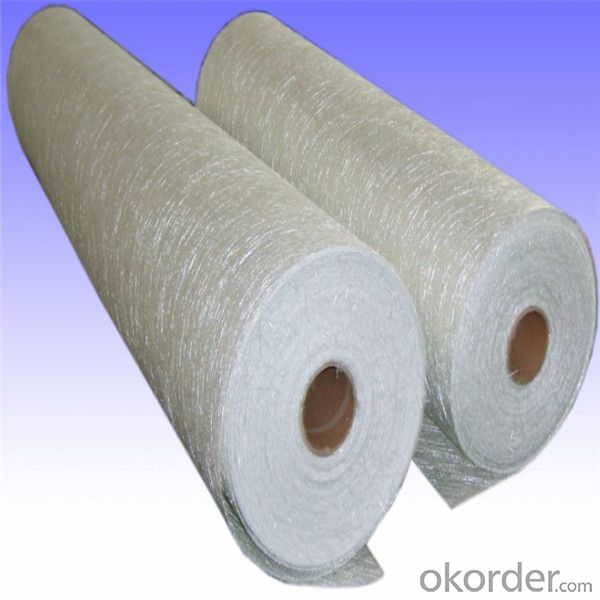
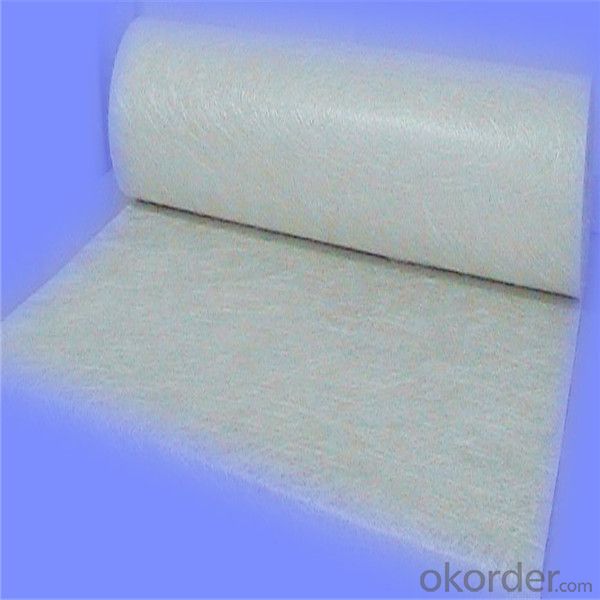
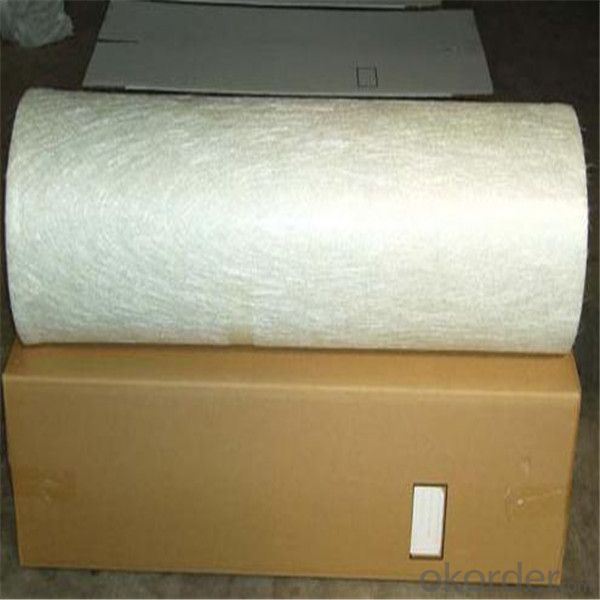
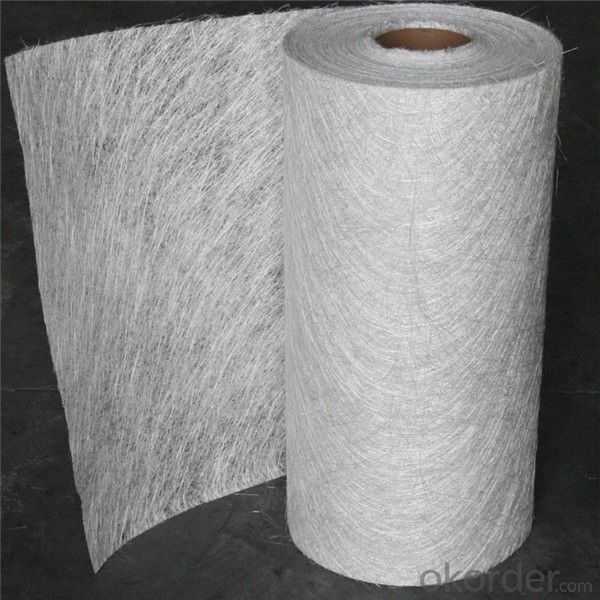
- Q: How is fiberglass chopped strand used in the electrical and electronics industry?
- The electrical and electronics industry extensively utilizes fiberglass chopped strand due to its exceptional electrical insulation properties and mechanical strength. Its excellent performance makes it an essential component in various applications. In the electrical and electronics industry, one of the primary uses of chopped strand is in the production of electrical insulation materials. These materials are crucial for insulating coils and windings in motors, transformers, and other electrical equipment. Chopped strand serves as a reinforcement material in the production of electrical insulation tapes, which are widely used in this industry. Its high tensile strength and dimensional stability enhance the mechanical properties of these tapes, ensuring their long-lasting durability and reliability. Moreover, chopped strand also finds application in the manufacturing of electrical laminates and composites. These laminates are utilized in the construction of various electrical components, including circuit boards, switchgear, and insulating barriers. The fiberglass reinforcement in these laminates provides the necessary mechanical strength and rigidity, while simultaneously improving their electrical insulation properties. Furthermore, chopped strand is employed in the production of electrical connectors and terminals. By incorporating fiberglass reinforcement, these components can withstand high temperatures and mechanical stresses, while maintaining excellent electrical conductivity. This crucially contributes to the long-term reliability and performance of electrical connectors and terminals. In conclusion, fiberglass chopped strand plays a vital role in the electrical and electronics industry by offering enhanced electrical insulation, mechanical strength, and dimensional stability to a wide range of products. Its versatility and reliability make it an indispensable material in the design and manufacturing of electrical insulation materials, laminates, connectors, and terminals.
- Q: Is fiberglass chopped strand suitable for marine structural applications?
- Yes, fiberglass chopped strand is suitable for marine structural applications. It is a durable and corrosion-resistant material that can withstand the harsh marine environment, making it ideal for use in boat hulls, decks, and other structural components. Its high strength-to-weight ratio and excellent impact resistance also make it a popular choice in the marine industry.
- Q: What are the typical fire safety regulations for fiberglass chopped strand composites?
- The typical fire safety regulations for fiberglass chopped strand composites include ensuring the materials meet specific flame spread and smoke generation limits, as well as implementing measures to prevent the spread of fire, such as using fire-resistant coatings or additives. Additionally, fire safety regulations may also require proper storage, handling, and disposal practices for these composites to minimize fire risks.
- Q: Can fiberglass chopped strand be used in the production of insulation boards?
- Yes, fiberglass chopped strand can be used in the production of insulation boards. Fiberglass chopped strand is commonly used as a reinforcement material in various applications, including insulation boards. It provides excellent thermal insulation properties, as well as strength and durability. The chopped strands are typically mixed with a resin binder and other additives to form a homogeneous mixture, which is then molded into insulation boards of desired shapes and sizes. The fiberglass chopped strand helps to enhance the structural integrity and insulating capabilities of the boards, making them suitable for use in various industries, such as construction, automotive, and aerospace.
- Q: Can fiberglass chopped strand be used in composite manufacturing processes?
- Yes, fiberglass chopped strand can be used in composite manufacturing processes. Chopped strand is a form of fiberglass that has been cut into short lengths, typically 1-3 inches. It is commonly used as a reinforcing material in composite manufacturing, where it is mixed with a resin matrix to create a strong and lightweight composite material. The chopped strand is typically spread evenly throughout the resin matrix, either by hand or by using specialized equipment. The resin matrix then cures, creating a solid and durable composite material. The fibers in the chopped strand provide reinforcement to the composite, improving its mechanical properties such as strength and stiffness. Chopped strand is often used in processes such as hand lay-up, spray-up, and filament winding. It is a versatile material that can be used in a wide range of composite applications, including automotive parts, aerospace components, marine structures, and construction materials. In conclusion, fiberglass chopped strand is a commonly used material in composite manufacturing processes. It provides reinforcement to composite materials, improving their mechanical properties and making them suitable for various applications.
- Q: Is fiberglass chopped strand suitable for automotive interior panels?
- Yes, fiberglass chopped strand is suitable for automotive interior panels. Fiberglass chopped strand consists of short strands of glass fibers that are randomly dispersed and bonded together. This material is lightweight, strong, and has excellent dimensional stability, making it an ideal choice for automotive interior panels. It provides excellent strength-to-weight ratio, which is crucial for ensuring the panels can withstand the rigors of daily use while minimizing the overall weight of the vehicle. Additionally, fiberglass chopped strand has good resistance to chemicals, heat, and impact, further enhancing its suitability for automotive applications. Its versatility allows for easy molding and shaping into complex panel designs, ensuring a perfect fit for the interior components of automobiles. Overall, fiberglass chopped strand is a reliable and durable material that meets the specific requirements of automotive interior panels.
- Q: How does the electrical conductivity of fiberglass chopped strand affect its performance?
- The electrical conductivity of fiberglass chopped strand affects its performance by determining its ability to conduct electricity. Higher electrical conductivity in fiberglass allows for better electrical flow and can enhance its performance in applications where electrical conductivity is desired, such as in electrical insulation or in the reinforcement of conductive materials. On the other hand, lower electrical conductivity can be beneficial in applications where electrical insulation is required, as it helps prevent electrical current from passing through the fiberglass material. Ultimately, the electrical conductivity of fiberglass chopped strand plays a crucial role in determining its suitability for specific applications.
- Q: Is fiberglass chopped strand suitable for renewable energy applications?
- Yes, fiberglass chopped strand is suitable for renewable energy applications. Fiberglass is a versatile material known for its strength, durability, and resistance to corrosion, making it an ideal choice for various renewable energy applications. In wind energy, fiberglass chopped strand is commonly used in the manufacturing of wind turbine blades. The material's high tensile strength and ability to withstand harsh weather conditions make it an excellent choice for this application. Fiberglass also offers lightweight properties, which is crucial for minimizing the weight of the blades and maximizing energy production. Furthermore, fiberglass chopped strand is used in the construction of solar panels. The material provides excellent electrical insulation, which is essential for maintaining the efficiency and safety of solar panels. Fiberglass also offers high thermal resistance, enabling the panels to withstand extreme temperatures and prolong their lifespan. Additionally, fiberglass chopped strand can be used in the manufacturing of hydroelectric power equipment. Its corrosion resistance properties make it suitable for withstanding the harsh conditions present in hydroelectric power plants, such as exposure to water and moisture. Overall, fiberglass chopped strand is a reliable and effective material for renewable energy applications. Its strength, durability, and resistance properties make it a suitable choice for wind energy, solar power, and hydroelectric power applications.
- Q: Can fiberglass chopped strand be used in the production of construction reinforcements?
- Indeed, the utilization of fiberglass chopped strand is possible in the manufacturing of construction reinforcements. This versatile material finds frequent application in the construction sector to fortify an array of building materials including concrete, plaster, and other composites. Its integration with these materials serves to amplify their robustness, longevity, and resilience against cracks and fractures. Typically, during the production process, the chopped strands are blended with the mixture, guaranteeing even dispersion of the reinforcement within the material. Consequently, fiberglass chopped strand emerges as an optimal selection for construction reinforcements due to its ability to offer structural support and enhance the overall efficacy of the building material.
- Q: How does the fiber surface treatment of fiberglass chopped strand affect its performance?
- The fiber surface treatment of fiberglass chopped strand plays a crucial role in determining its performance. The surface treatment involves applying a chemical coating or sizing on the surface of the strands to enhance their properties and compatibility with the matrix material. One of the key effects of fiber surface treatment is the improvement in adhesion between the fiberglass strands and the resin matrix. The treatment modifies the surface chemistry of the fibers, making them more reactive and promoting better wetting and bonding with the resin. This enhanced adhesion helps in transferring stress from the matrix to the fibers, resulting in increased strength and stiffness of the composite material. Another important aspect influenced by surface treatment is the fiber-matrix interface. The treatment can create a mechanical interlock between the fibers and the matrix, increasing the interfacial strength and preventing fiber pull-out or debonding. This leads to improved impact resistance and durability of the composite. Surface treatment also affects the moisture resistance of fiberglass chopped strand. The treatment can make the fibers more hydrophobic, reducing water absorption and enhancing dimensional stability. This is particularly important in applications where exposure to moisture or harsh environmental conditions is a concern, as it helps maintain the mechanical properties of the composite over time. Furthermore, the surface treatment can influence the dispersibility and flowability of the chopped strands during processing. It can reduce the tendency of fiber clumping or agglomeration, ensuring a more uniform distribution of fibers within the matrix. This contributes to improved mechanical and thermal properties of the composite. In summary, the fiber surface treatment of fiberglass chopped strand significantly impacts its performance. It enhances adhesion, improves the fiber-matrix interface, increases moisture resistance, and promotes better fiber dispersibility. These effects ultimately result in improved strength, stiffness, impact resistance, durability, and dimensional stability of the composite material.
Send your message to us
Chopped Strand Fiberglass for Sale - Chopped Stand Mat for Fiberglass Boat Parts
- Loading Port:
- Tianjin
- Payment Terms:
- TT OR LC
- Min Order Qty:
- 100 m.t.
- Supply Capability:
- 20000 m.t./month
OKorder Service Pledge
Quality Product, Order Online Tracking, Timely Delivery
OKorder Financial Service
Credit Rating, Credit Services, Credit Purchasing
Similar products
Hot products
Hot Searches
Related keywords



